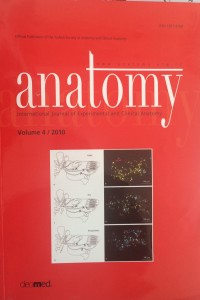Experimental studies on post-transectional facial nerve regrowth and functional recovery of paralyzed muscles of the face in rats and mice
Abstract
Insufficient recovery after peripheral nerve injury has been attributed to (i) lack of axonal navigation and poor pathfinding of regrowing axons to improper targets, (ii) excessive collateral axonal branching at the lesion site and (iii) polyneuronal reinnervation of the neuromuscular junctions (NMJ). The facial nerve transection model in rat and mice has been used to measure the restoration of function after varying therapies and to examine the mechanisms underlying their effects. Since it is still very difficult to combat the first reason and control/correct the navigation of several thousand axons, several groups of scientists concentrated our efforts on the postlesional branching (extremely strong in adult rats) and NMJ-polyinnervation. Since polyneuronal innervation of muscle fibers is activity-dependent attempts to reduce it were performed applying electrical stimulation. Unfortunately, the highly recommended intraoperative electrical stimulation of the proximal nerve fragment (square 0.1 ms pulses at 20 Hz using suprathreshold amplitudes) prior to suture and the postoperative electrical stimulation (square 0.1 ms pulses at 5 Hz) not only did not improve functional outcome, but reduced the number of innervated NMJ to approximately one fifth of normal values. Finally, recent experiments demonstrated that it was the mechanical (but not electrical) stimulation of denervated facial muscles (vibrissal and orbicularis oculi) which improved motor performance. This beneficial effect of mechanical stimulation was also detected after hypoglossal-facial anastomosis and inter-positional nerve grafting. The beneficial effect of manual stimulation on target muscle reinnervation was not present in mice deficient in the expression of insulin-like growth factor 1 and also eliminated or even reversed when trigeminal afferent inputs were abolished. All these findings raise hopes that clinically feasible and effective therapies could be soon designed and tested.
Details
| Primary Language | English |
|---|---|
| Subjects | Health Care Administration |
| Journal Section | Articles |
| Authors | |
| Publication Date | October 1, 2010 |
| Published in Issue | Year 2010 Volume: 4 Issue: 1 |
Cite
Anatomy is the official journal of Turkish Society of Anatomy and Clinical Anatomy (TSACA).

